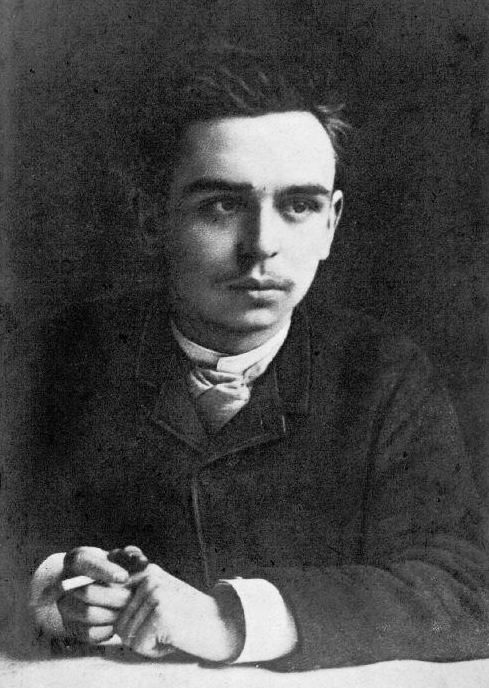Name Guillaume Lekeu | Role Composer | |
 | ||
Similar People Ernest Chausson, Cesar Franck, Philippe Jaroussky, Alain Lefevre, Darius Milhaud | ||
Guillaume lekeu 3 pi ces pour piano
Jean Joseph Nicolas Guillaume Lekeu (20 January 1870 – 21 January 1894) was a Belgian composer of classical music.
Contents
- Guillaume lekeu 3 pi ces pour piano
- Guillaume lekeu adagio pour quatuor d orchestre 1891
- Life
- Musical style and influences
- Compositions
- Musical structures
- Stage
- Choral
- Songs
- Orchestra
- Concertante and Ensemble works
- Chamber music
- Piano
- References

Guillaume lekeu adagio pour quatuor d orchestre 1891
Life
Lekeu was born in Heusy, a village near Verviers, Belgium. He originally studied piano and music theory under Alphonse Voss, the director of the brass band at the local conservatory. In 1879, his parents moved to Poitiers, France. He continued to pursue his music studies independently while at school, composing his first piece at the age of 15. From 1885 onwards, he regularly composed new music, especially for piano, and studied harmony and violin from 1887 under Octave Grisard.
In June 1888, his family moved to Paris where he began to study philosophy. He was introduced to the works of Téodor de Wyzewa and continued his studies under Gaston Vallin. In August 1889, he traveled to Bayreuth to see the operas of Richard Wagner. On his return, he studied counterpoint and fugue privately with Cesar Franck. Franck encouraged him to continue composing; after Franck's death in the autumn of 1890, Wyzewa introduced him to Vincent d'Indy, who taught him orchestration and encouraged him to compete for the Prix de Rome, awarded in Brussels. In 1891, he won second prize in the competition for the cantata Andromède.
In 1892, d'Indy introduced Lekeu to Octave Maus, then secretary of Brussels-based Le Cercle des XX. Eugène Ysaÿe commissioned a work from him, the Violin Sonata in G major, which premiered in March 1893, and which is highly regarded.
Lekeu contracted typhoid fever from a contaminated sorbet in October 1893. He died in his parents' home in Angers on 21 January 1894, the day after his 24th birthday. On 26 January 1894, he was buried in a small cemetery in Heusy.
Musical style and influences
Lekeu's personal style was present in his earliest compositions. In 1887, he said "Bien plus, ce sera bizarre, détraqué, horrible, tout ce qu'on voudra; mais, du moins, ce sera original" ("Even more, it will be weird, mad, horrible, anything you like, but at least it will be original").
Lekeu's string quartets were inspired by Beethoven, and exposure to Wagner's operas at Bayreuth influenced his approaches to melody. He described this as "des mélodies de telle longeur qu'un seul exposé suffisait à parfaire ... un morceau de musique" ("melodies of such length that a single presentation was sufficient to complete ... a piece of music").
His primary influence was Franck. Many of his works are characterized by a certain melancholy: in his own words, "la joie [est] mille fois plus difficile à peindre que la souffrance" ("joy is a thousand times harder to paint than suffering").
Compositions
Lekeu composed about 50 works, and left a number of unfinished compositions at the time of his death. Two of these, a Cello Sonata and his Piano Quartet, were completed by D'Indy. All have been recorded at least once, and several of them more than once, notably the Violin Sonata in G Major and the Piano Trio in C minor. The first time Piano Sonata in G minor had been completely performed on live by pianist Paweł Albiński in Cracow on 20 August 2014.
His style, prophetic of early-twentieth-century avant-garde French composers like Satie and Milhaud, was influenced by Franck, Wagner and (especially in the Trio) Beethoven, though these influences did not manifest themselves as mere imitation. In general, Lekeu is regarded as a highly talented composer whose death cut short a promising musical career.
Musical structures
His larger compositions are cyclic in structure; that is, themes in his works will often recur from movement to movement, something no doubt inherited from a long tradition of nineteenth-century European composers, as well as from many works of Franck and d'Indy. The recurring themes in the violin sonata have led some scholars to suggest that it was an inspiration for the Vinteuil Sonata, an imaginary work described by Marcel Proust in In Search of Lost Time. However, the structure imagined by Proust is also similar to the violin sonata by Franck.
